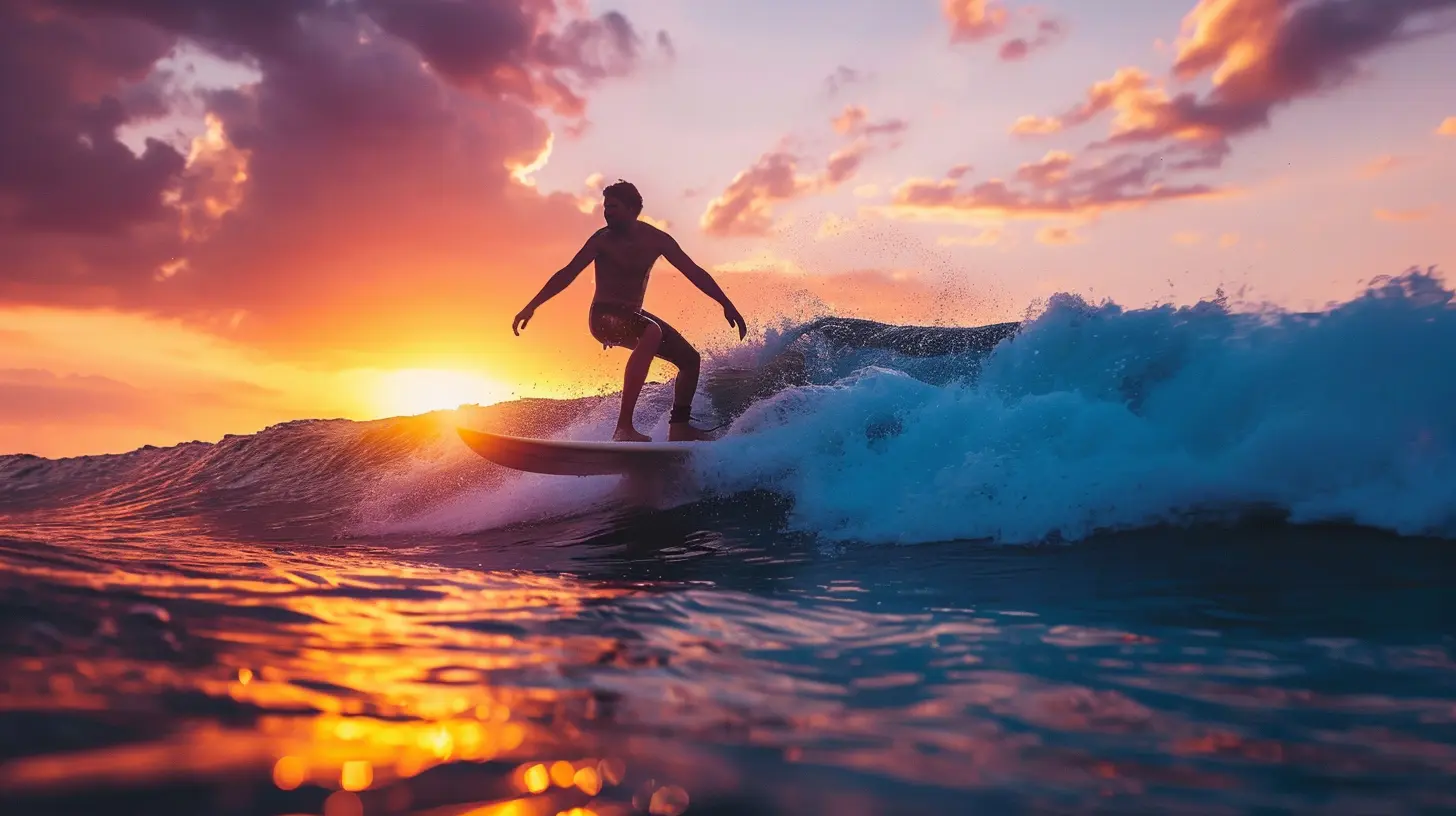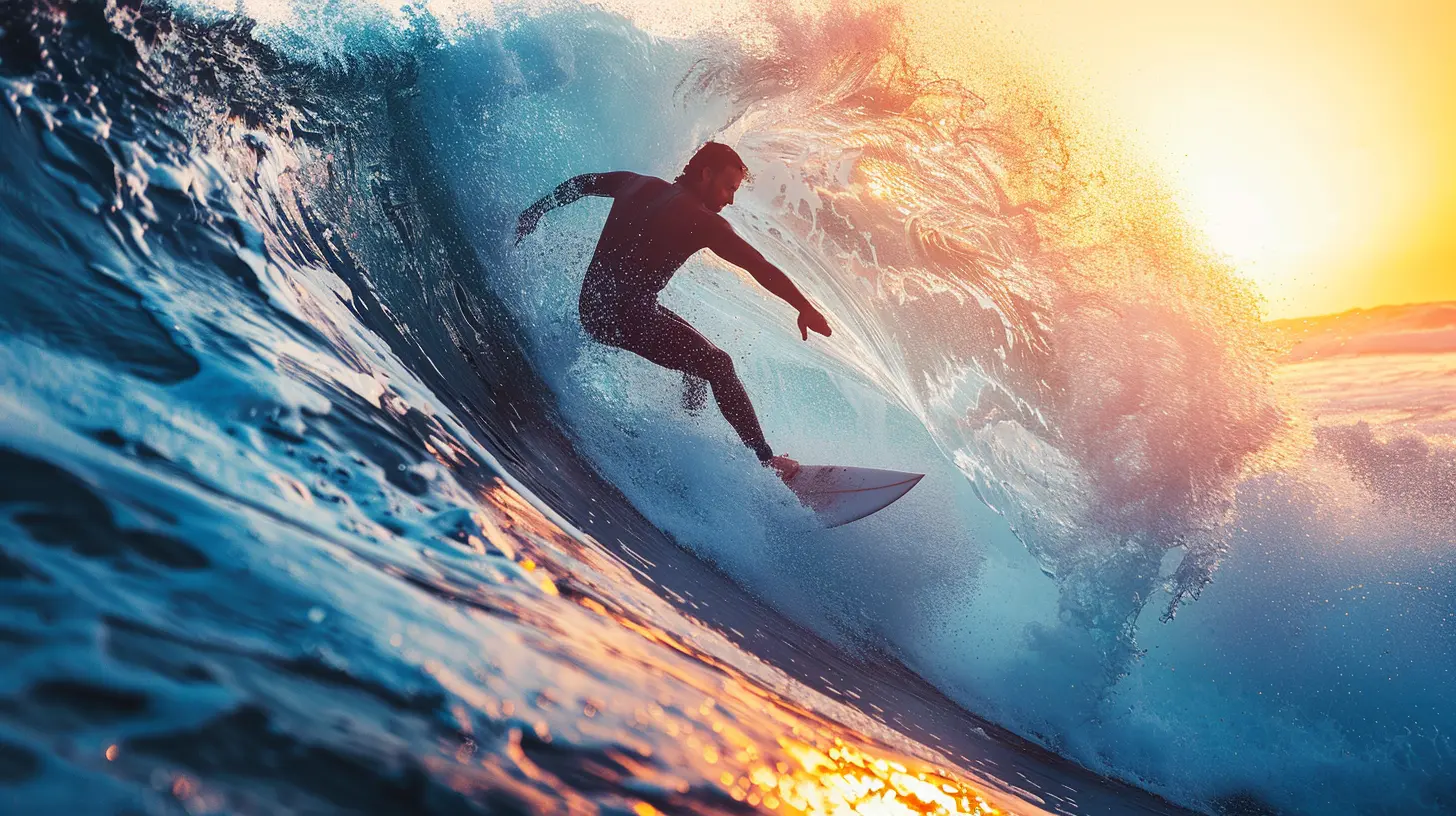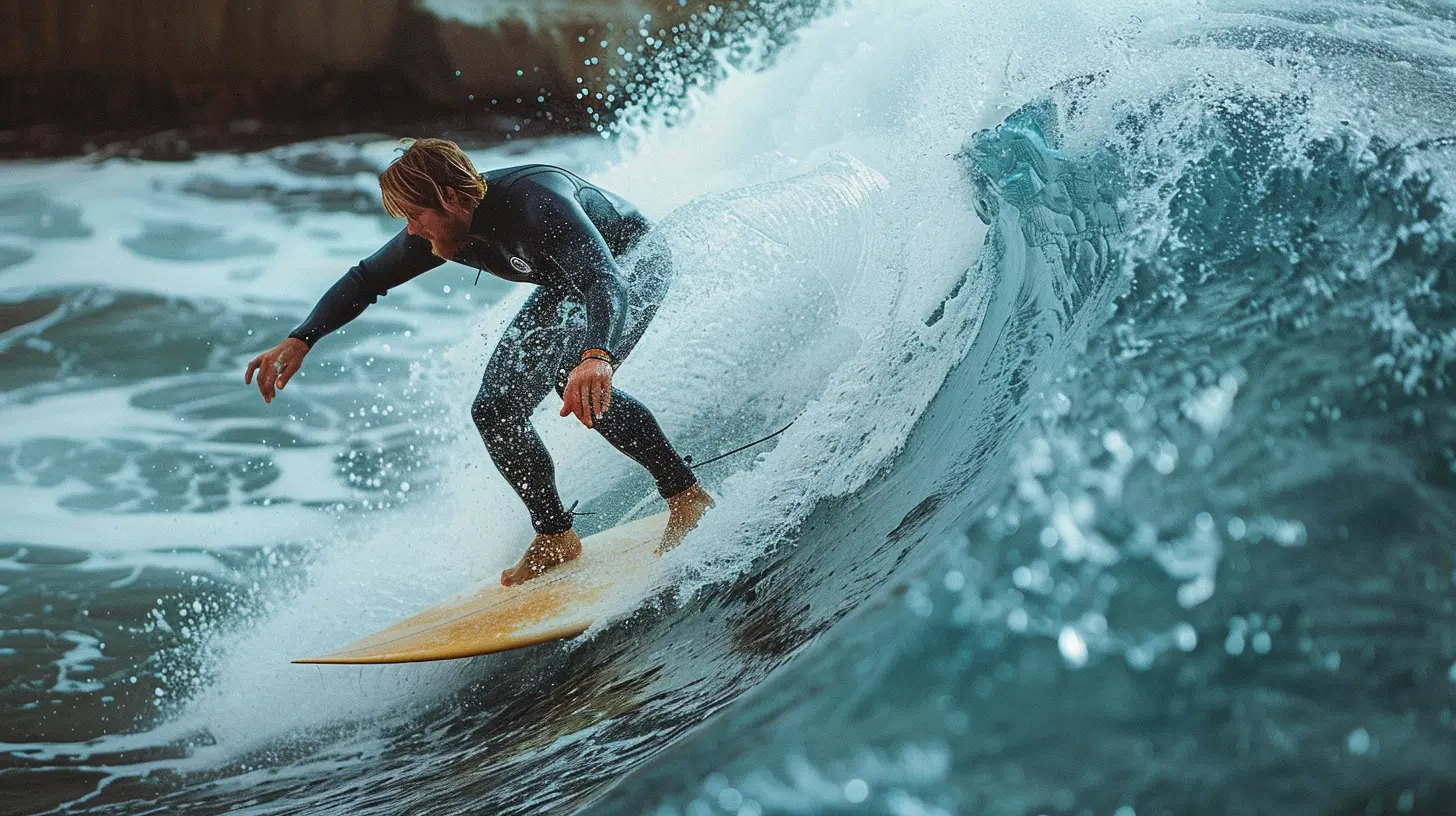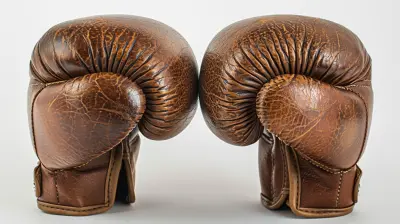The Role of Balance and Core Strength in Surfing
14 May 2025
Surfing is an art, a sport, and for many, a way of life. From catching your first wave to mastering barrel rides, one thing remains constant—balance and core strength are everything. If you've ever watched a pro surfer glide effortlessly across a wave, you've probably wondered: "How do they make it look so easy?" Spoiler alert—it's all about balance and core stability.
In this article, we’ll dive deep into why balance and core strength are essential in surfing, how you can improve them, and what exercises will help you stay on your board longer. 
Why Balance and Core Strength Matter in Surfing
1. Stability on the Board
Surfing isn't just about standing up; it’s about staying up. Waves are constantly shifting, pulling, and pushing you in different directions. Without proper balance, you're going to end up in the water more often than you'd like.Your core acts like your body's natural stabilizer. Strong abdominal, back, and hip muscles help you adjust to the unpredictability of the ocean, keeping you upright even when the waves try to throw you off.
2. Better Wave Control
The better your balance, the more in tune you become with the wave. Advanced surfers maneuver their boards with ease, cutting through waves, riding barrels, and pulling off tricks—all of which require exceptional core strength.Think of your core as the steering wheel of your surfboard. The stronger it is, the better control you have over your movements, allowing you to react quickly to the ocean's ever-changing conditions.
3. More Power in Your Turns
Ever seen a surfer carve a wave so smoothly it looks effortless? That comes down to core engagement. When you turn your board, you don't just lean; your entire body, especially your core muscles, generate that movement.A weak core makes your moves sloppy and less powerful. A strong core ensures your turns are crisp, controlled, and explosive when they need to be.
4. Improved Endurance
Surfing isn't just physically demanding, it's downright exhausting. Paddling out, popping up, and riding waves takes a toll on your body. The stronger your core and balance, the less fatigued you'll feel, meaning longer surf sessions and more fun.Your core muscles help distribute energy efficiently, reducing strain on your limbs and allowing you to surf for extended periods without burning out. 
How to Improve Your Balance and Core Strength for Surfing
Now that we know why balance and core strength are so important, let’s talk about how to improve them.1. Core Strengthening Exercises
Strengthening your core isn’t about doing endless sit-ups. It's about working the entire core region, which includes your abs, obliques, lower back, and even your glutes.Here are some of the best core exercises for surfers:
Planks (and Variations)
Planks are a staple for core strength. But standard planks aren’t enough—try variations like:- Side Planks – Great for oblique strength, helping with lateral stability in turns.
- Dynamic Planks – Moving from forearm to push-up position to mimic quick movements on the board.
- Plank Twists – Engages obliques and improves rotational strength, essential for surfing maneuvers.
Russian Twists
Sitting on the floor with your feet off the ground, twist side to side holding a weight or medicine ball. This movement enhances rotational strength, helping you maintain balance when cutting through waves.Leg Raises
Leg raises target lower abdominal muscles, key for maintaining a strong, upright posture when surfing.Superman Holds
Lie on your stomach and lift your arms and legs off the ground. This strengthens your lower back, a crucial muscle group for paddling strength and overall stability.2. Balance Training
Balance isn’t something you're born with—it’s something you train. The more you work on your balance, the better you'll handle those sudden shifts on your board.Here are some top balance exercises for surfing:
Bosu Ball Training
A Bosu ball mimics the instability of a surfboard, making it one of the best tools to train your balance. Try:- Squats on a Bosu Ball – Builds leg strength and stability.
- Single-Leg Stands – Improves control and strengthens stabilizers.
- Push-Ups on a Bosu Ball – Challenges your core and upper body balance.
Indo Board or Balance Board Training
Surfers swear by Indo Boards for improving stability. Standing on a balance board engages your core and forces you to work on micro-adjustments—just like when you're on a surfboard.Yoga for Balance
Yoga isn’t just about flexibility—it’s amazing for balance too. Poses like Tree Pose, Warrior III, and Boat Pose strengthen stabilizing muscles, making you a steadier surfer.3. Functional Strength Training
In addition to balance and core workouts, incorporating functional strength training is key. These exercises mimic the movements you use while surfing, helping improve overall performance.- Deadlifts – Strengthen the posterior chain, improving paddling power.
- Kettlebell Swings – Enhance hip drive, essential for popping up quickly.
- Lunges and Squats – Improve leg endurance and stability, helping with powerful turns. 
Pro Tips for Better Surfing Balance
Building core strength and balance is one thing, but applying it in the ocean is another. Here are a few on-the-water tips to improve your balance while surfing:1. Keep Your Eyes on the Horizon
Where you look matters. If you stare at your feet, you're more likely to lose balance. Keep your eyes on the horizon—it helps maintain proper posture and enhances stability.2. Bend Your Knees, Not Your Back
When riding a wave, always bend your knees rather than hunching over. This keeps your weight centered and improves overall control.3. Use Your Arms for Balance
Your arms aren’t just there for show—they help counterbalance your movements. Think of them as tightrope walker poles, keeping you steady.4. Engage Your Core Constantly
Your core isn’t just for workouts; it should stay engaged while surfing too. A tight core means better stability and quicker response to sudden wave movements.
Conclusion
Surfing is a dance between you and the ocean, and balance and core strength are what keep you moving gracefully. Whether you're a beginner or a seasoned pro, improving your core strength and stability will elevate your surfing game.By incorporating core-focused workouts, balance training, and functional strength exercises, you'll not only surf better but also stay injury-free and surf longer.
So, next time you hit the waves, remember—a strong core is your best friend. Train hard, stay balanced, and most importantly, enjoy the ride!
all images in this post were generated using AI tools
Category:
SurfingAuthor:

Onyx Frye
Discussion
rate this article
4 comments
Evren Bowman
Balancing core strength is crucial in surfing; it enhances stability and control, enabling surfers to navigate waves effectively.
June 20, 2025 at 4:21 AM

Onyx Frye
Thank you for highlighting this essential aspect of surfing! Core strength indeed plays a vital role in maintaining balance and control on the waves.
Fable McIntosh
How does core strength affect wave riding?
May 28, 2025 at 3:22 AM

Onyx Frye
Core strength is crucial for wave riding as it enhances stability, control, and balance on the board, allowing surfers to react effectively to the wave's movements and maintain their position.
Brandon Reed
Essential tips for improving surfing performance!
May 17, 2025 at 12:41 PM

Onyx Frye
Focus on strengthening your core and enhancing your balance through targeted exercises. These skills are crucial for maintaining stability on the board and improving overall performance.
Zevon Morrow
In surfing, balance and core strength transcend mere technique; they embody the harmony between mind and body. This synergy allows surfers to navigate the unpredictable ocean, illustrating that true mastery lies not just in skill but in the profound connection between spirit, nature, and self.
May 16, 2025 at 4:10 AM

Onyx Frye
Thank you for highlighting the deep connection between mind, body, and nature in surfing. Your insights beautifully capture the essence of true mastery in the sport.


